If you had asked us what Périgord or Corrèze meant to us before our road trip to France, we probably wouldn’t have been able to give you anything other than the black truffle of Périgord or maybe the nuts of Périgord (as usual, the only things we can think of are either for drinking and eating 😉 ). Moreover, we would have been unable to place these two departments (even more or less) in the right place on a map of France… even worse, we didn’t even know that the Dordogne was a river!
So the advantage of having a French culture close to zero before this trip (we only knew a bit about the gorges du Verdon and Brittany) is that we had absolutely no expectations when we arrived in the Périgord noir region (except for one or two hikes planned for the top secret project we are working on right now #teaser 😉 ). And yet, we found ourselves teleported back to the Middle Ages in a region where the villages are all more beautiful than the others.
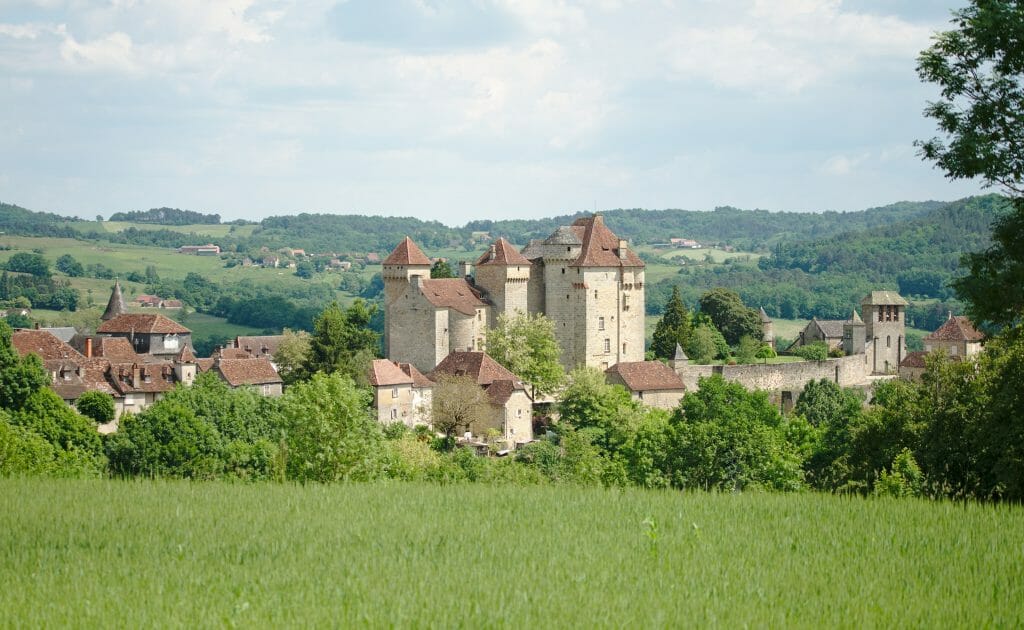
The prettiest villages to see in Perigord and Corrèze
Read the full article or jump directly to the village of your choice
Where is the Périgord noir and Corrèze?
But before we start talking to you about our multiple favourites in this region, it is first of all a question of answering the 1st existential question of which we did not have the answer:
Where is Périgord and Corrèze on a map of France?
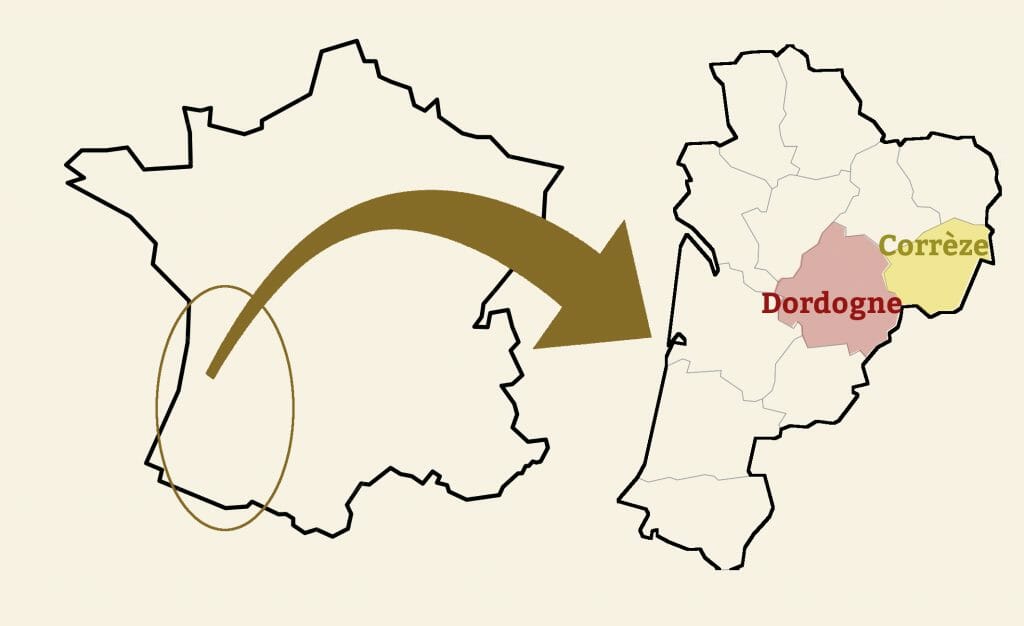
The Dordogne and Corrèze are in fact 2 departments of New Aquitaine. And what is called Périgord is in fact an old county that was located about on the current department of the Dordogne. They are also on this line of the least populated departments in France, which is sometimes called “la diagonale du vide” (the empty diagonal).
But the Dordogne is also a river that originates in Auvergne and crosses the Corrèze and Périgord rivers until it meets the Garonne shortly after the city of Bordeaux.
That’s it!!! It wasn’t that complicated… and now that we know where these two regions are on the map, we can move on to the more interesting things.
Castles in the Dordogne valley?
As I told you at the beginning, we didn’t know much about Périgord and yet there is one element that is obvious when you drive through the region: There are many castles!
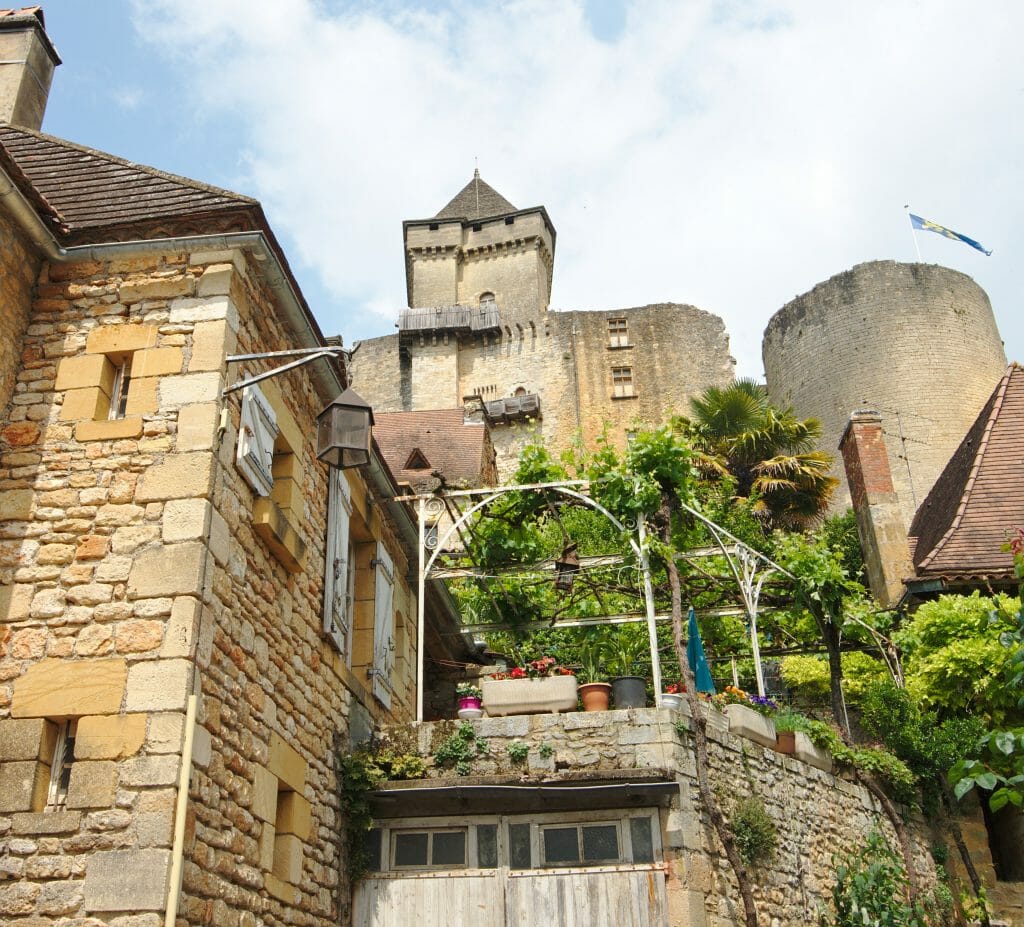
As we had never seen so many castles in other parts of France crossed until now, we wondered why there were so many in the Dordogne valley. Well, it so happens that in the Middle Ages, Périgord was split in two between the English on one side and the French on the other. Without going into too much detail, the French and English fought each other for more than a hundred years (hence the name: the 100-year war) in this region, which is why there are so many castles in the Dordogne.
Later on, the region will lose its strategic importance and fortresses will become less useful with technological advances. This explains why the castles are so numerous and well preserved in the Dordogne region.
As a result, these old wars can have a positive impact on tourism ;).
Our favourite villages in the Dordogne and Corrèze
Now that we know where these two departments are on the map and we understand why there are so many castles in the region, it is time to tell you about some villages that we really liked during our visit.
So be careful, we only stayed a few days between the Dordogne and Corrèze and we probably didn’t see the tenth of all the nice places in these regions. But here are some favourite villages that we had the chance to discover on our way this time (and a small map to better locate them).
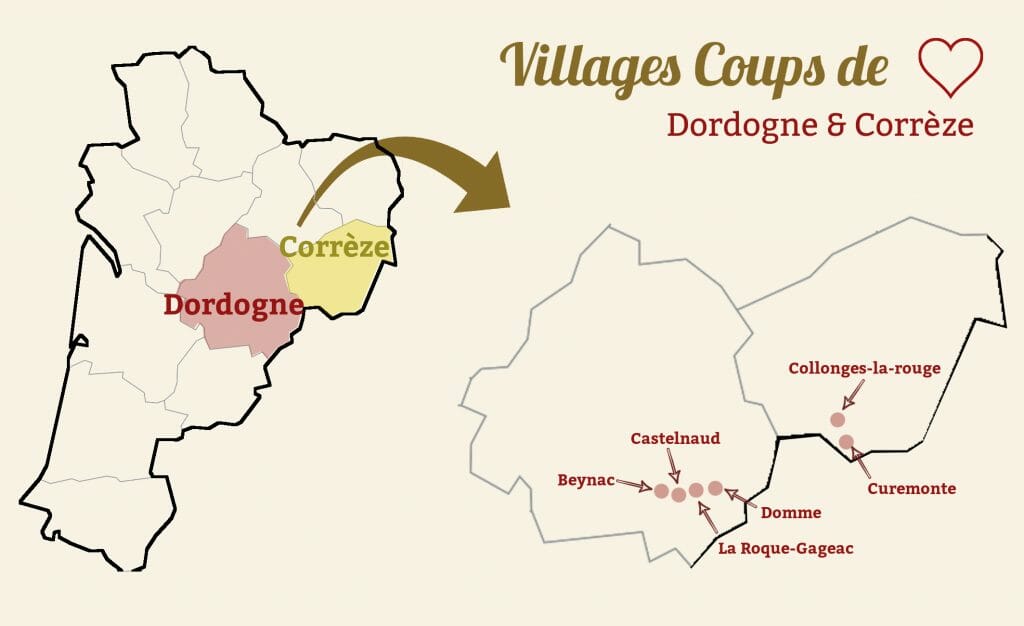
If you don’t have a car or simply if you’d like to have a guide for your visit we recommend you take a look at the Tour offer on Getyourguide.
They have a wide selection of tours that cover different areas. The one that covers most of the villages we mention in our post would probably be this one. A boat ride on the Dordogne to go see Beynac & Domme.
Castelnaud la chapelle
We arrived at the village of Castelnaud a little by chance because we had found online a nice hike to do between the Castelnaud Castle and the Milandes Castle. And since for once, we hadn’t been looking at what this village looked like online, the surprise was even better when we arrived there.
I set the scene for you… we arrive by crossing a bridge over the Dordogne with the castle that comes out of the forest at a steep angle above the river. After parking the car in the car park on the other side of the bridge, we discover the rest of the stone village on the hillside. You might as well say that we are immediately immersed in the atmosphere of the Middle Ages!
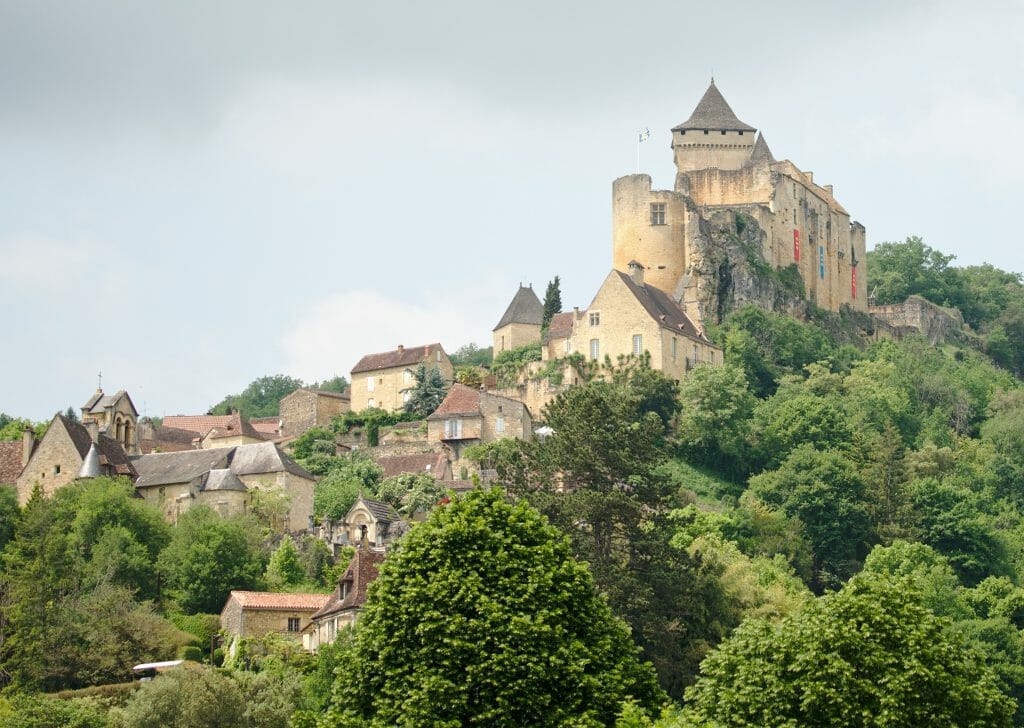
We then climbed through the old alleyways of the village until we reached the level of the castle, which has been renovated and now houses the War Museum of the Middle Ages. From up there, we have a very beautiful view of the Dordogne valley and the surrounding villages (which we will talk about a little further down). It is easy to understand why Castelnaud is on the list of the most beautiful villages in France.
From the castle, we did a short loop hike through the forest behind the village to the castle of Milandes and back. During this walk, we had very nice views of the village of Beynac and Cazenac (which is also a fortified village)… A very beautiful hike, 100% castle themed! 🙂
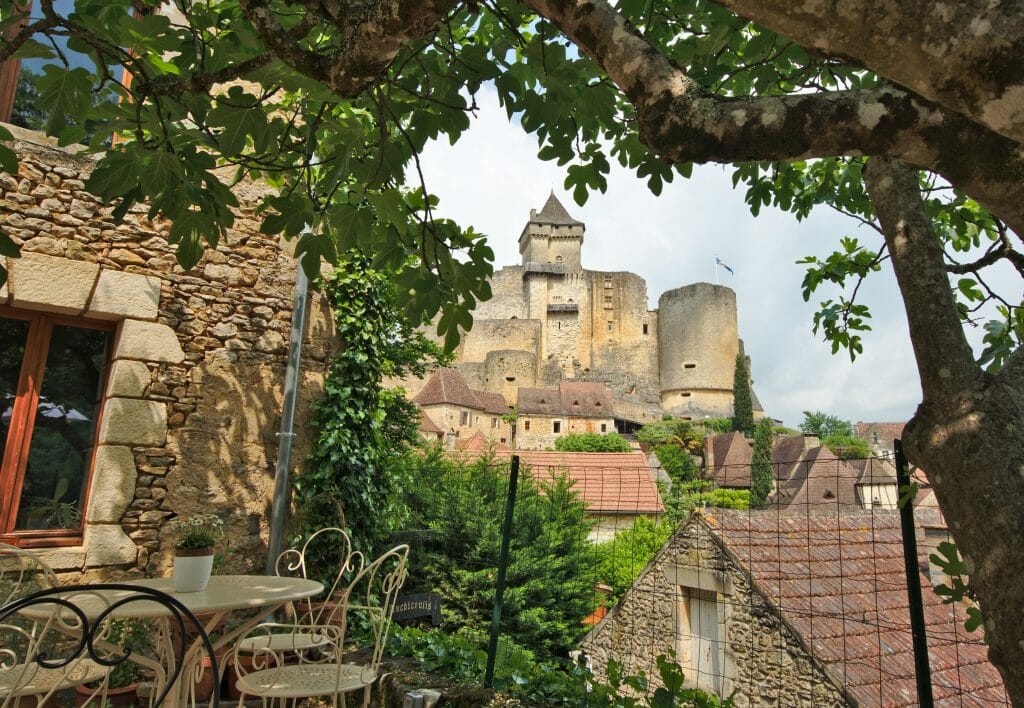
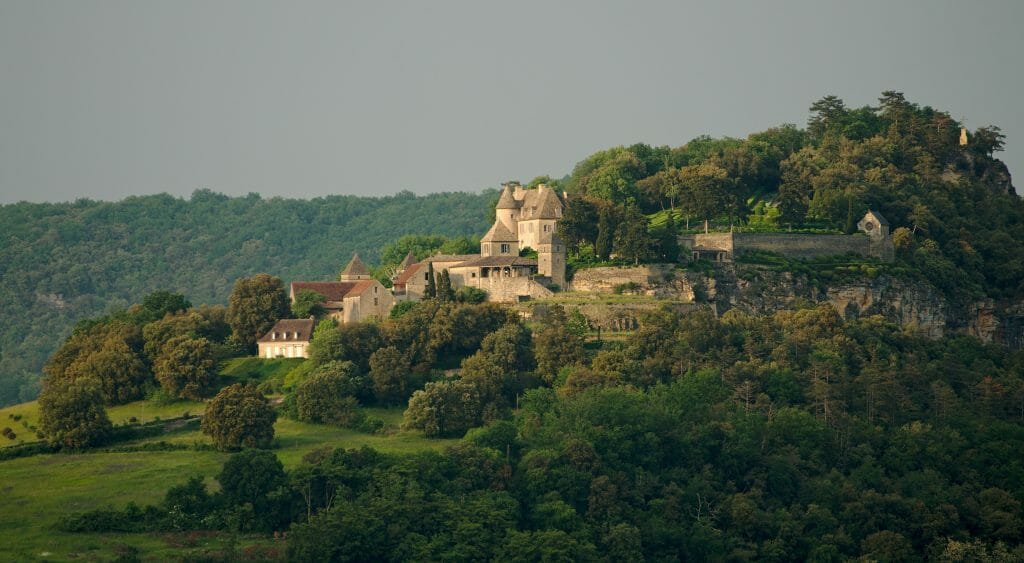
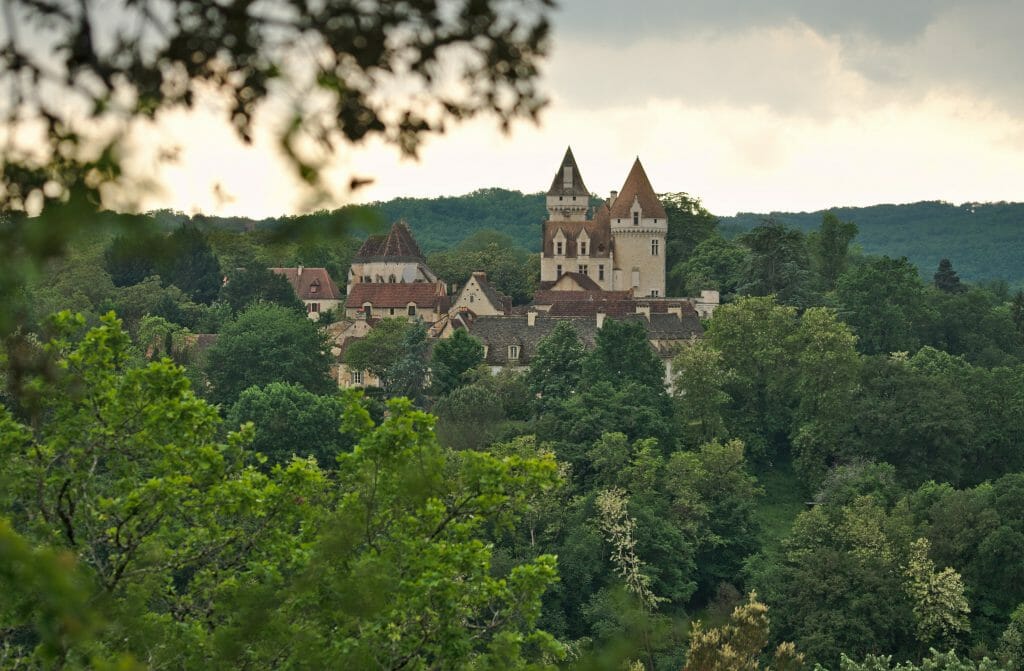
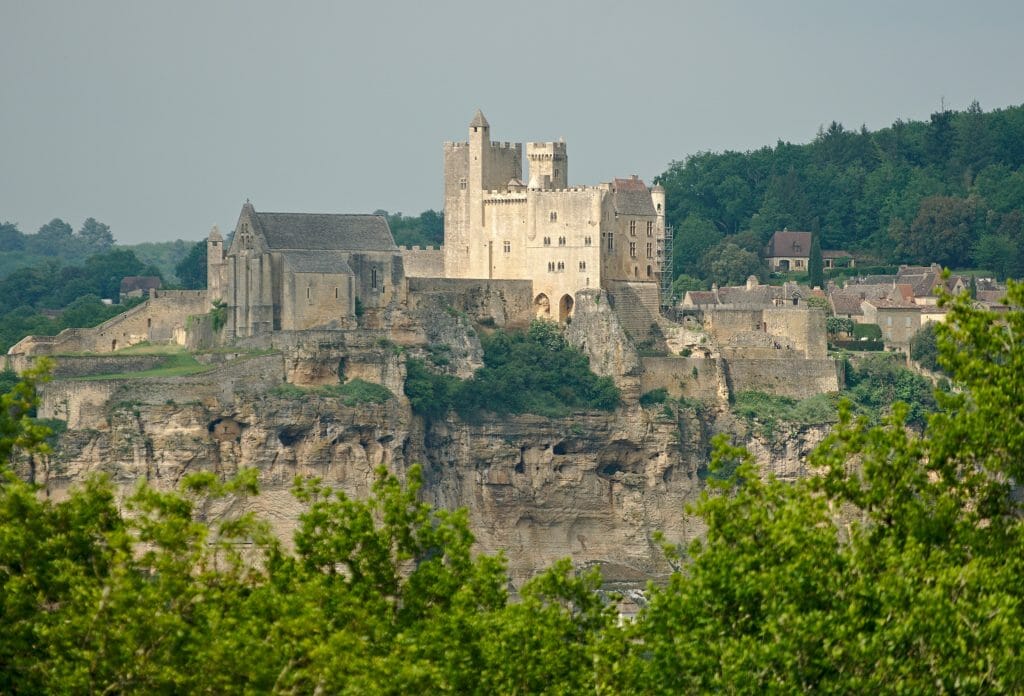
Beynac et Cazenac
As we could see the village and its impressive castle so well from the hike, we couldn’t help but go there to have a closer look! What is special about Beynac is that the houses are literally built on the cliff on the banks of the Dordogne. Its castle dominates the village from the cliff and with a little imagination, we can see very well the French (in Beynac) and the English (in Castelnaud) fighting here during the Hundred Years’ War.
And to keep the charm of the village alive, we passed by at sunset… we let you admire it 🙂
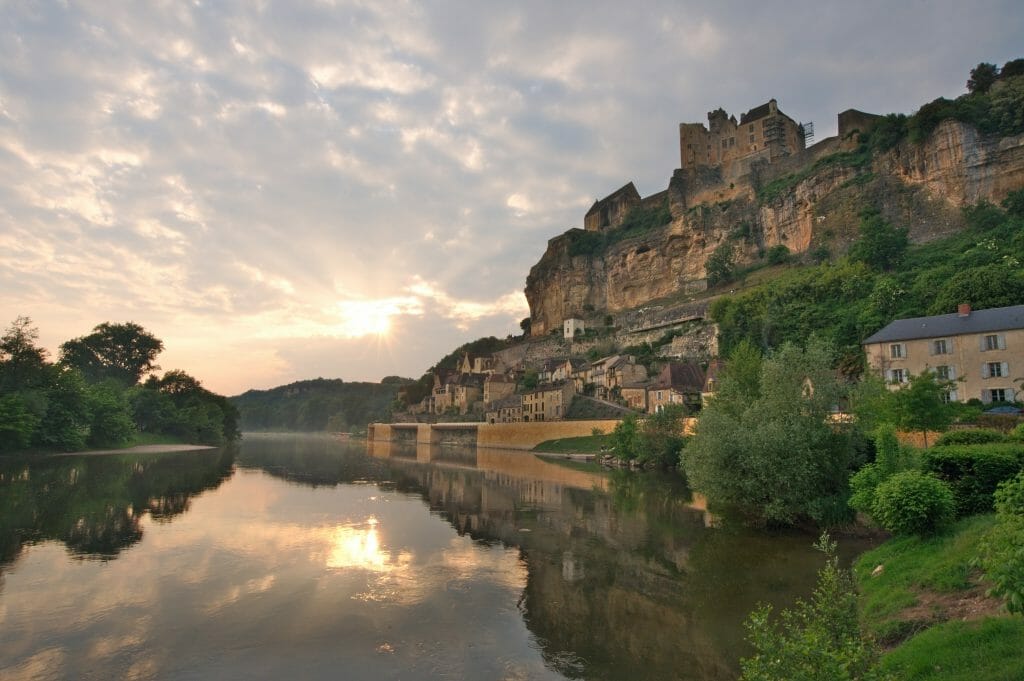
Domme
It is just next to Castelnaud and Beynac that we also find the next 2 villages on this list (and like the other two, they too are part of the list of the most beautiful villages in France. That makes quite a concentration of beautiful villages in such a small area 😉 ).
Dommeis located on a hill overlooking the Dordogne valley on the same bank as the village Castelnaud la chapelle. All the houses are built with beautiful yellow stones and it is a real pleasure to walk through its alleys. Part of the village is built on the edge of the cliffs,from which, one has an amazing view on the Dordogne valley and the village of La Roque Gageac which can be seen not far away. On the other hand, if you come to Domme don’t do as we do: Visit the caves below the village!
We didn’t see the entrance and it was actually only after we left the region that we realized that we completely forgot about these amazing caves… (well… it will give us an excuse to come back).
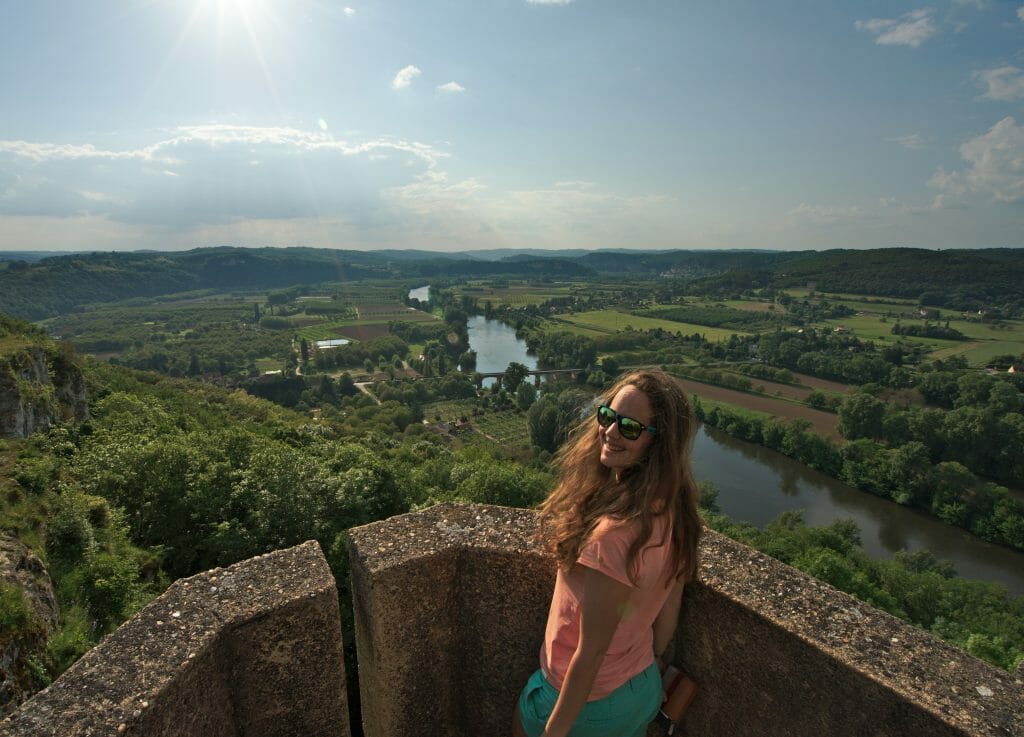
La Roque Gageac
It was because we could see the village of La Roque Gageac from Domme that we decided to go there. A little like Beynac, the houses are built in the heart of a cliff just on the banks of the Dordogne. Our favorite here was simply to walk along the Dordogne and then in the alleyway that climbs halfway up the cliff. On this street, in addition to having a very nice view of the Dordogne and the village, there are also palm trees, fig trees, banana trees… but enough talking, here are some pictures of La Roque Gageac 😉
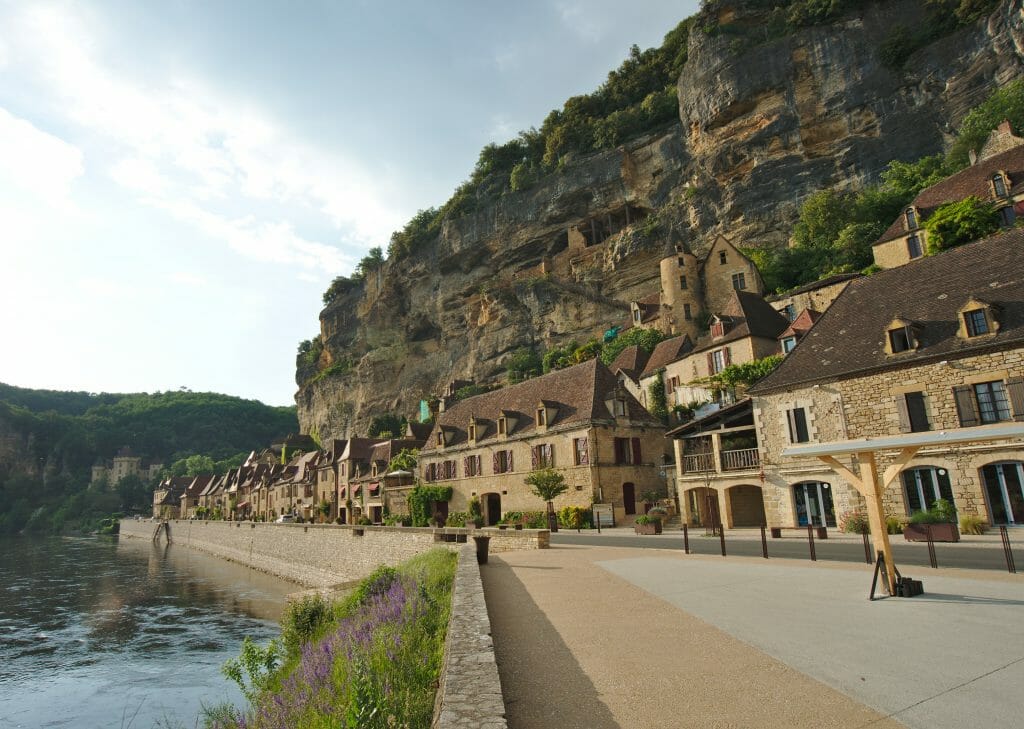
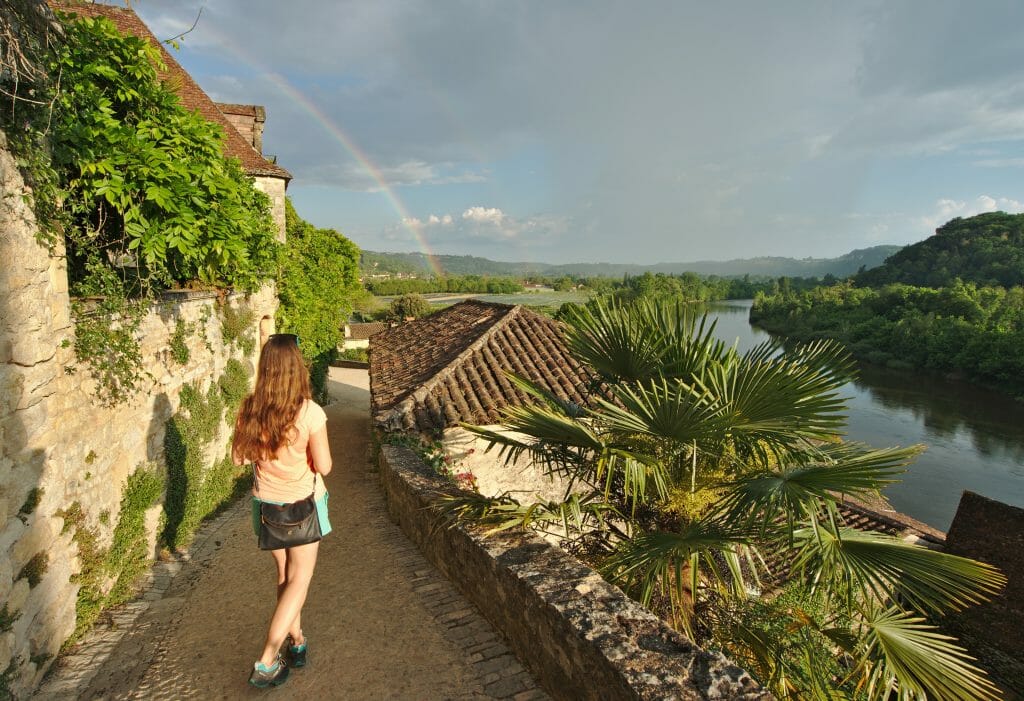
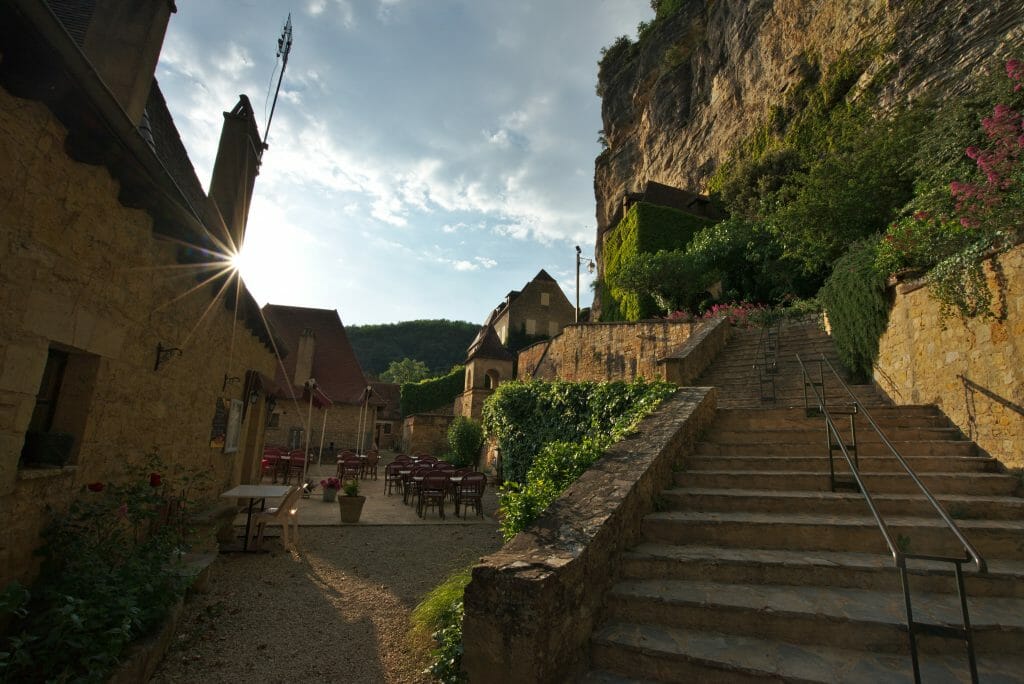
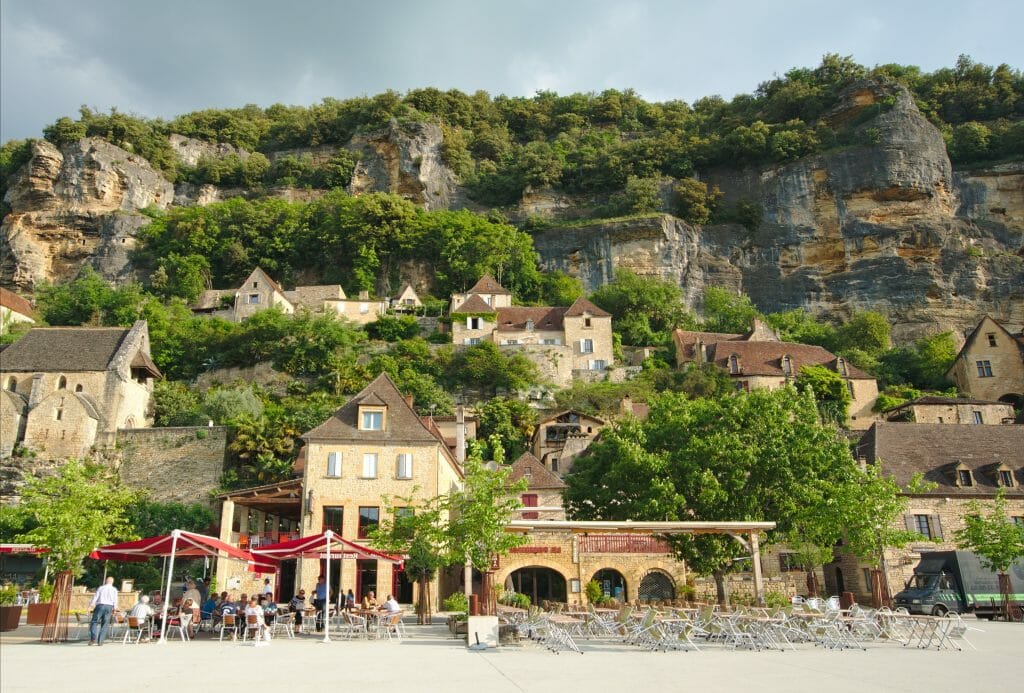
Curemonte
We change location a little bit this time and we pass to the department of Corrèze (well it’s only 1 hour drive from the other villages). There too, we arrived in Curemonte a little by chance because there was a great brewery right next to the village (Brasserie corrézienne). When we saw the castle from the road below, we decided to stop and go for a walk. From the car park behind the village, there is a superb view of the castle overlooking the houses and meadows. The centre of the village is also very pretty even if we had the impression that it was a little dead, except for the small café on the square which was open.
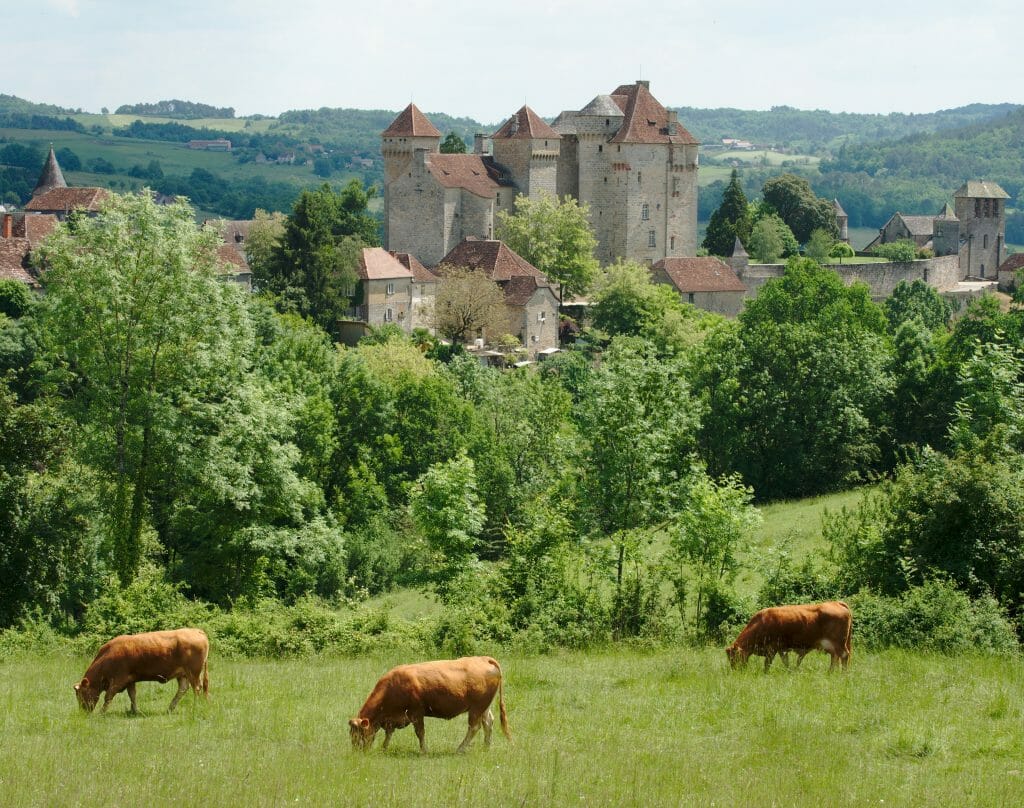
Collonges la rouge
And on the way back from Curemonte to our accomodation, a village with pink and red stones attracts our attention. So we decide to stop there to explore a little bit what lies behind these amazing colours. We discover an absolutely magnificent village that seems almost straight out of a storybook with its turret houses. Collonges la rouge is entirely built with red sandstone stones which gives it its original shades. In addition, the reds of the houses contrast with the green of the vines and plants that are everywhere in the village.
The only small downside, although we passed through it rather out of season, there were already quite a few people in the streets of Collonges la rouge. There are souvenir shops every 2m and we don’t dare to imagine what it can look like in the middle of summer… so we advise you to avoid July and August to discover this village.
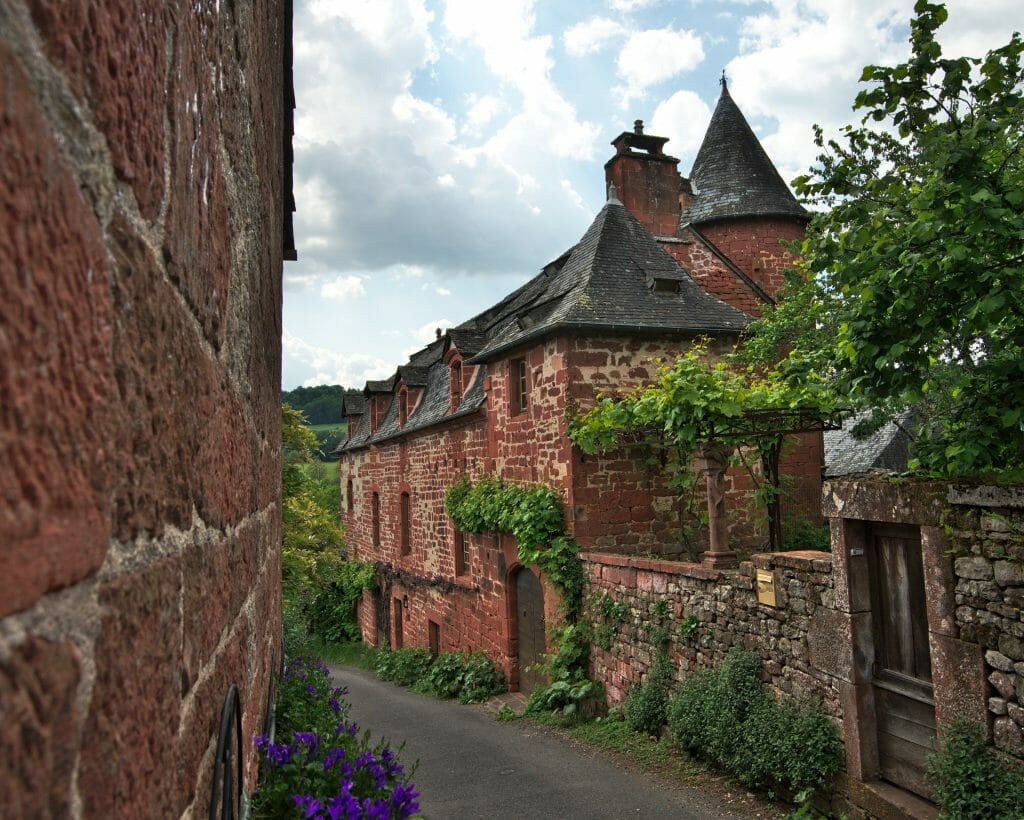
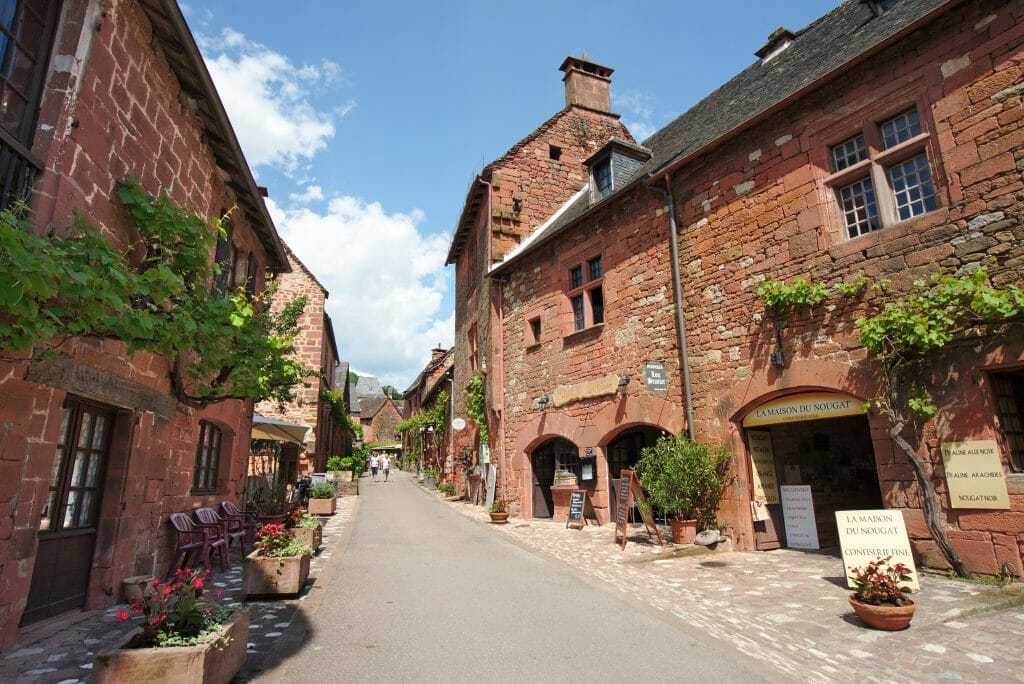
Where to stay in Dordogne or Corrèze?
How to wind where to stay
There are many villages to choose from to be fair! My best advice to visit these french villages would be that you take a look on Booking. Enter your dates, select “Dordogne” as a region and then exclude all hotels which are in a city. I mean, the whole point of coming to this area is to be in a nice village, isn’t it?
Once you’ve done so, filter by price and find your little oasis. I would really recommend to stay far from the big hotels and go try the smaller family run businneses. Plenty of Gites, B&B or guesthouses are available online.
You can also use the map below to find a hotel or apartment. Simply use the filters to select the type of accomodation and price range and the move the map to your desired area:
Oh and of course, you should make sure to have a car! If you are not travelling yet by car, then we highly advise you to rent one! In Dordogne you can rent cars in all major cities such as Bergerac or Périgueux. But if you are looking for the best price (and don’t have anything against doing a little roadtrip), then the cheapest place to get a rental car will most likely be Bordeaux Airport (or Bordeaux downtown). It’s about 1h30 by car to get from Bordeaux to the Dordogne / Perigord region.
That’s all for these favorites of our first visit to Périgord / Corrèze. It is a region of France that we did not know at all and which really charmed us. It is when you travel to such places that you realize the historical richness of France and the incredible opportunity to walk around in villages dating back to the Middle Ages.
It also reminded us that it is sometimes good not to learn about everything in advance and just to be surprised by the places that appear on our way. During these few days, we had no particular expectations and we were just happy to discover all these beautiful villages.
Note: This article contains affilaite links. By using our links for your bookings you obviously do not pay anything extra, but we’ll be earning a (small) commission. Thanks for your support.
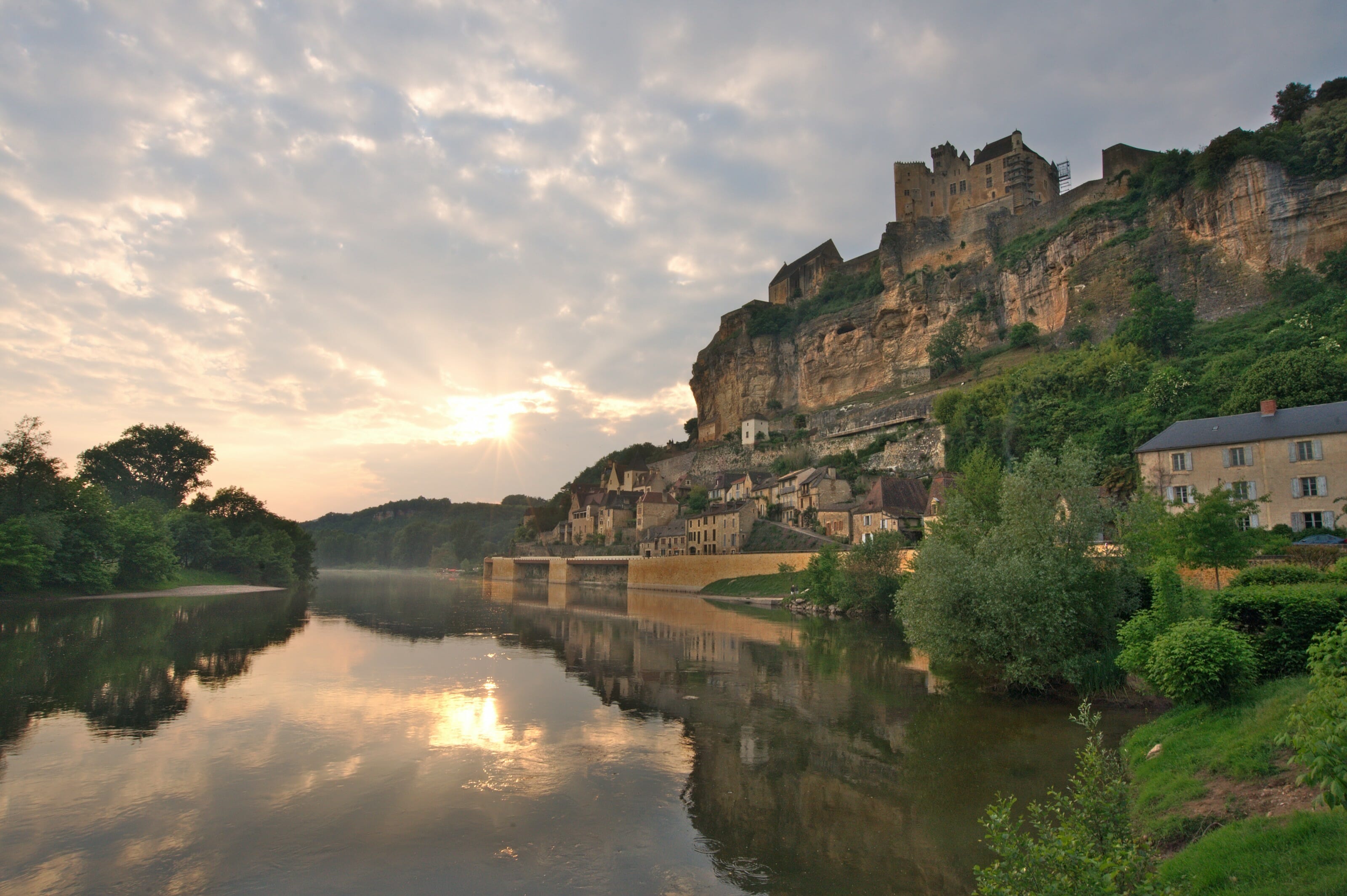
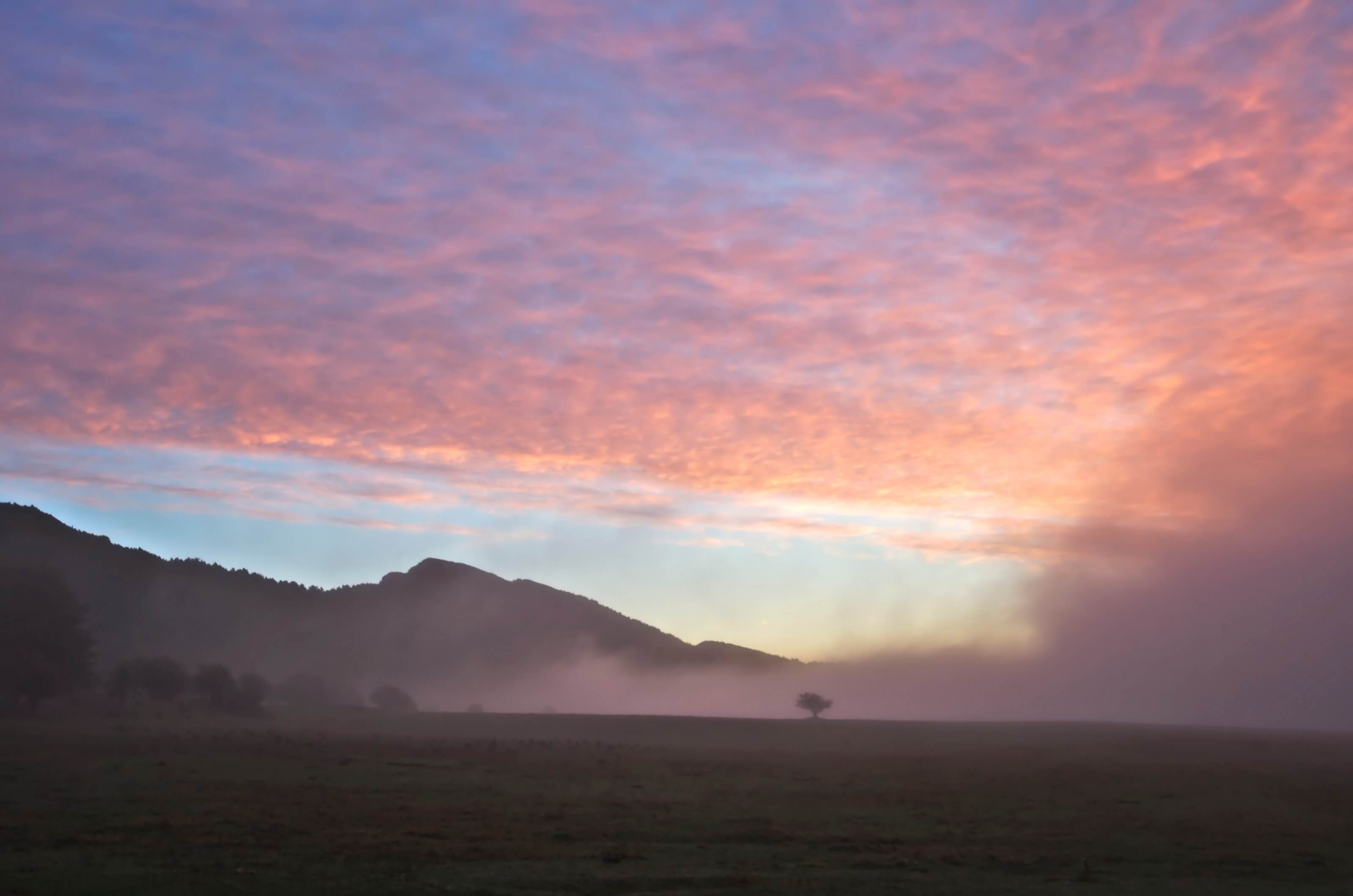
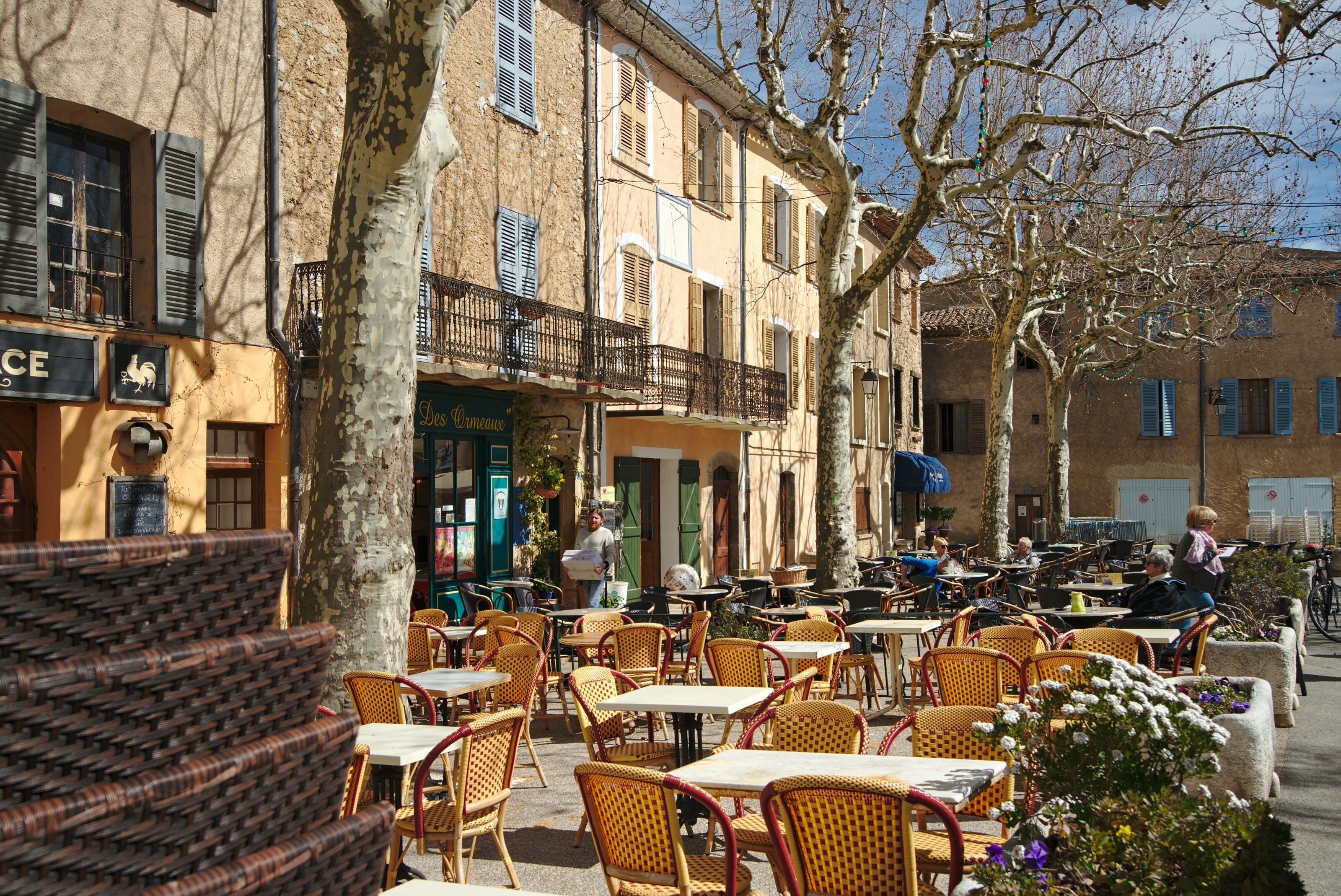
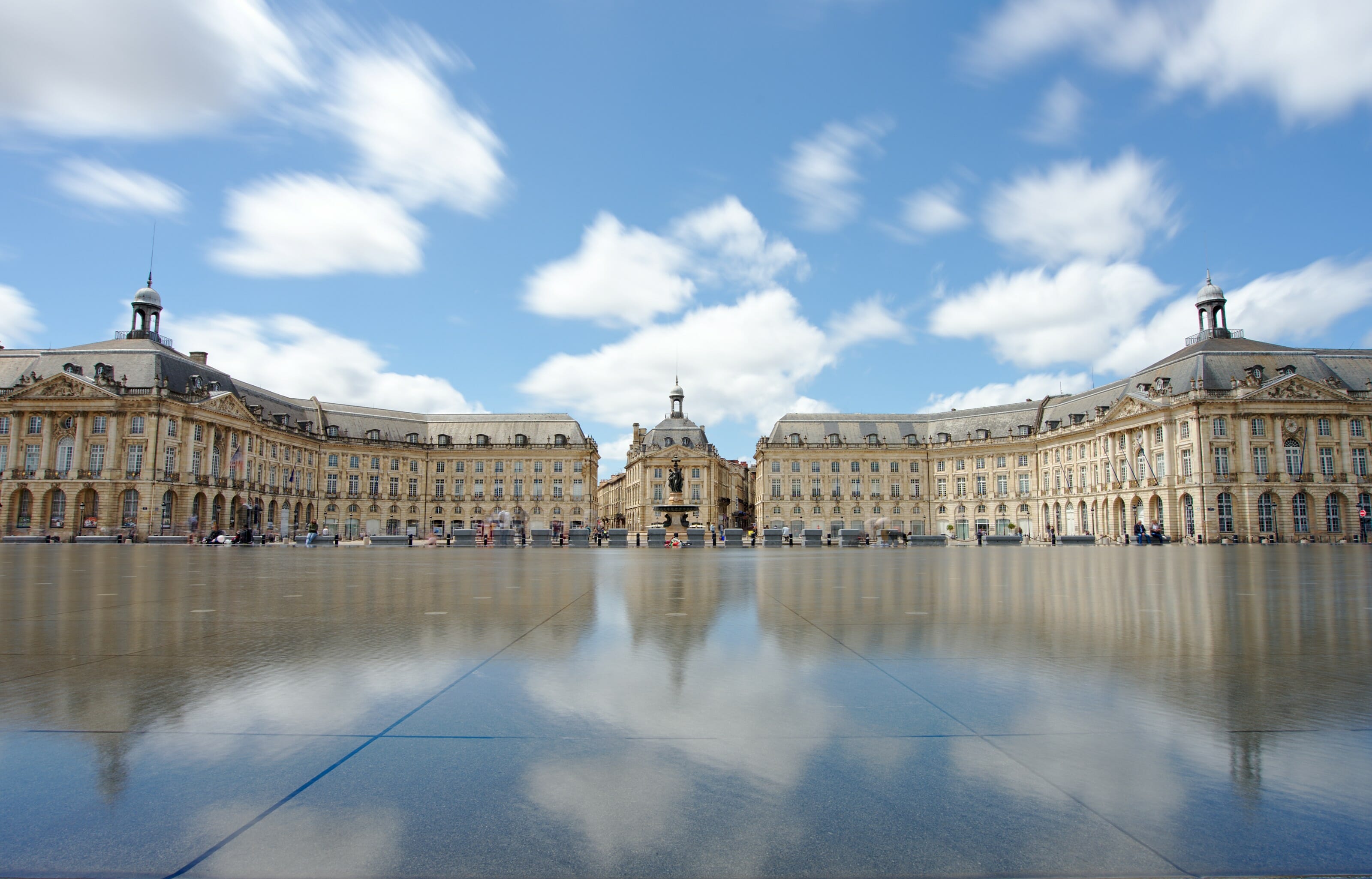
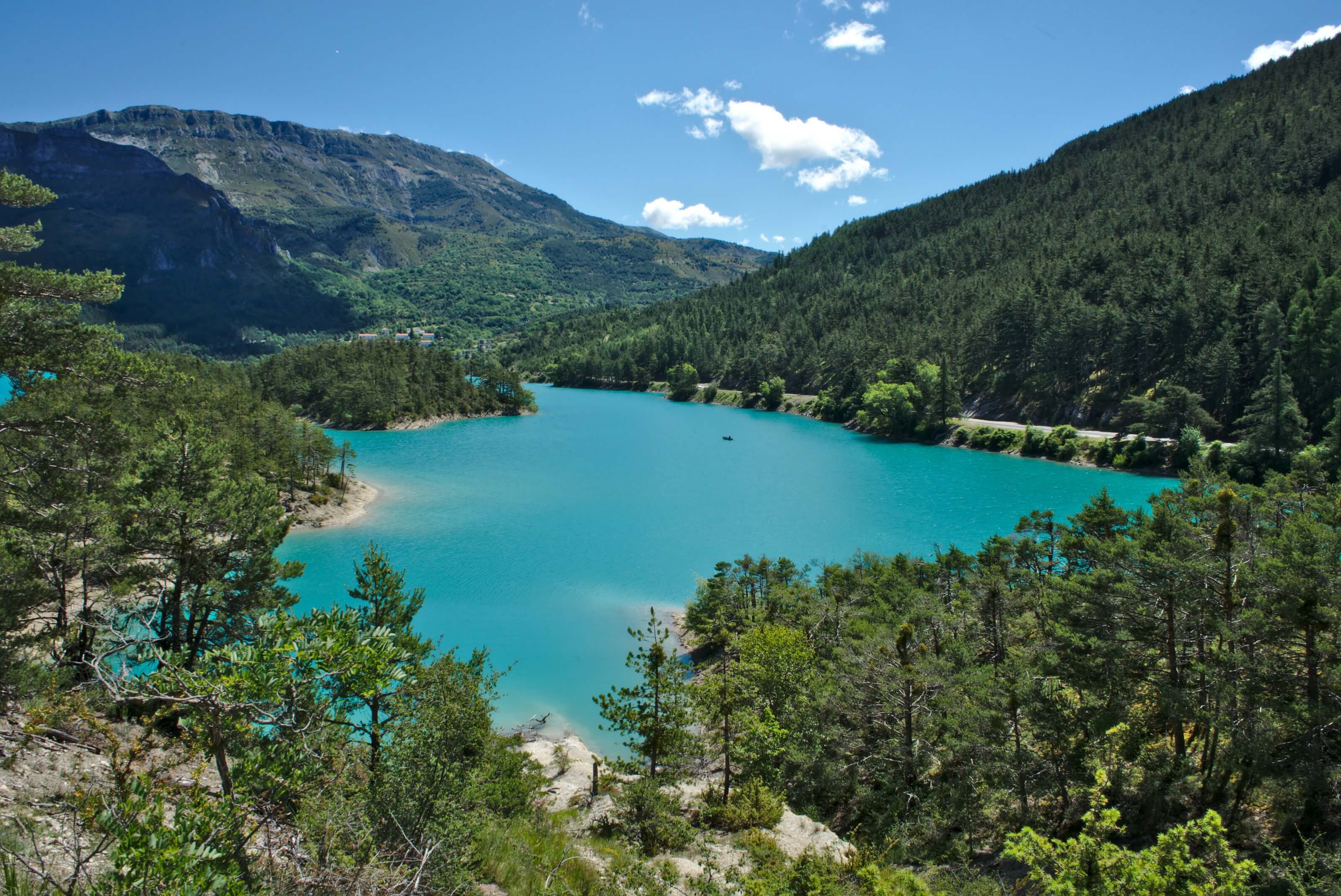
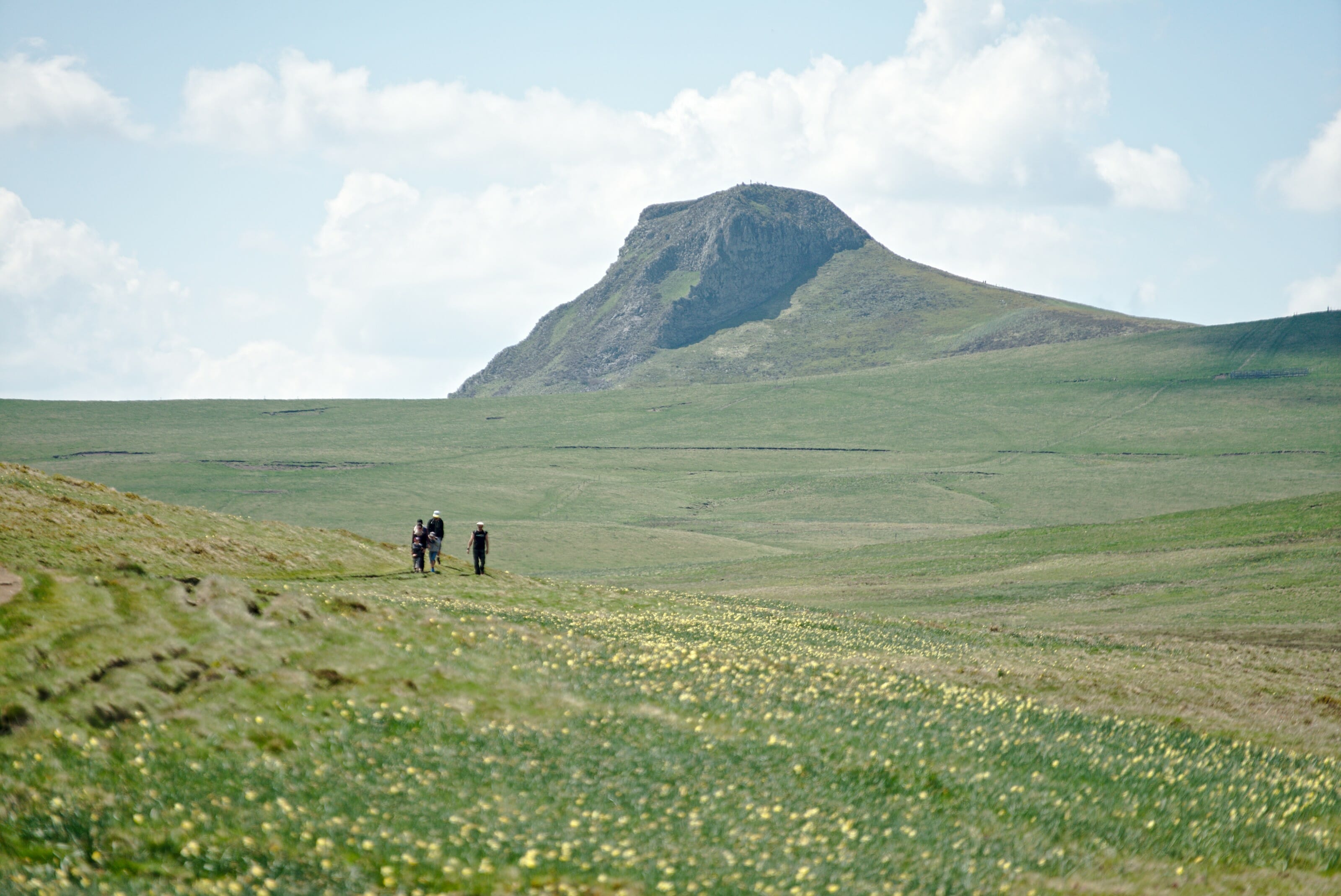
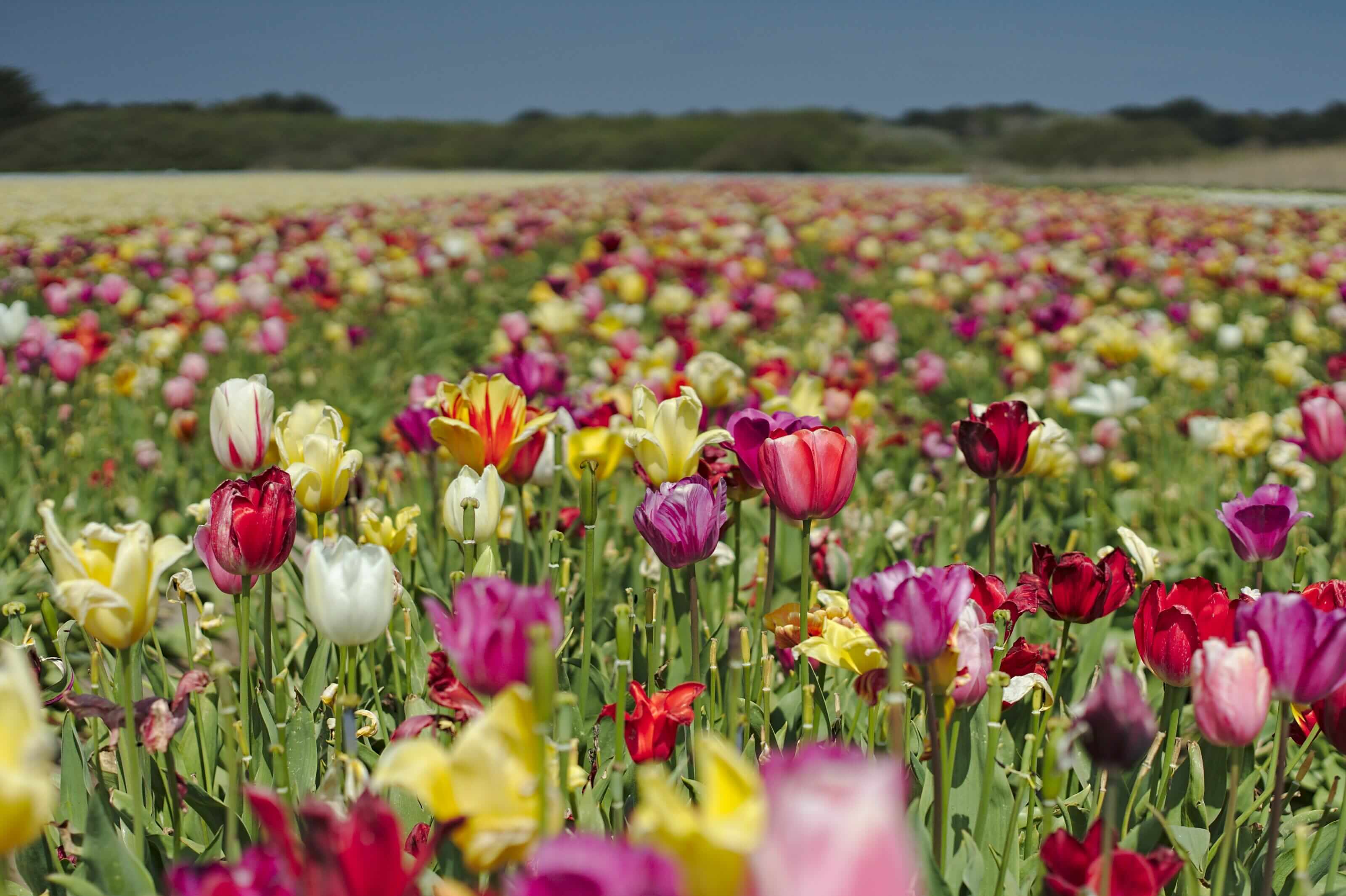
Join the discussion